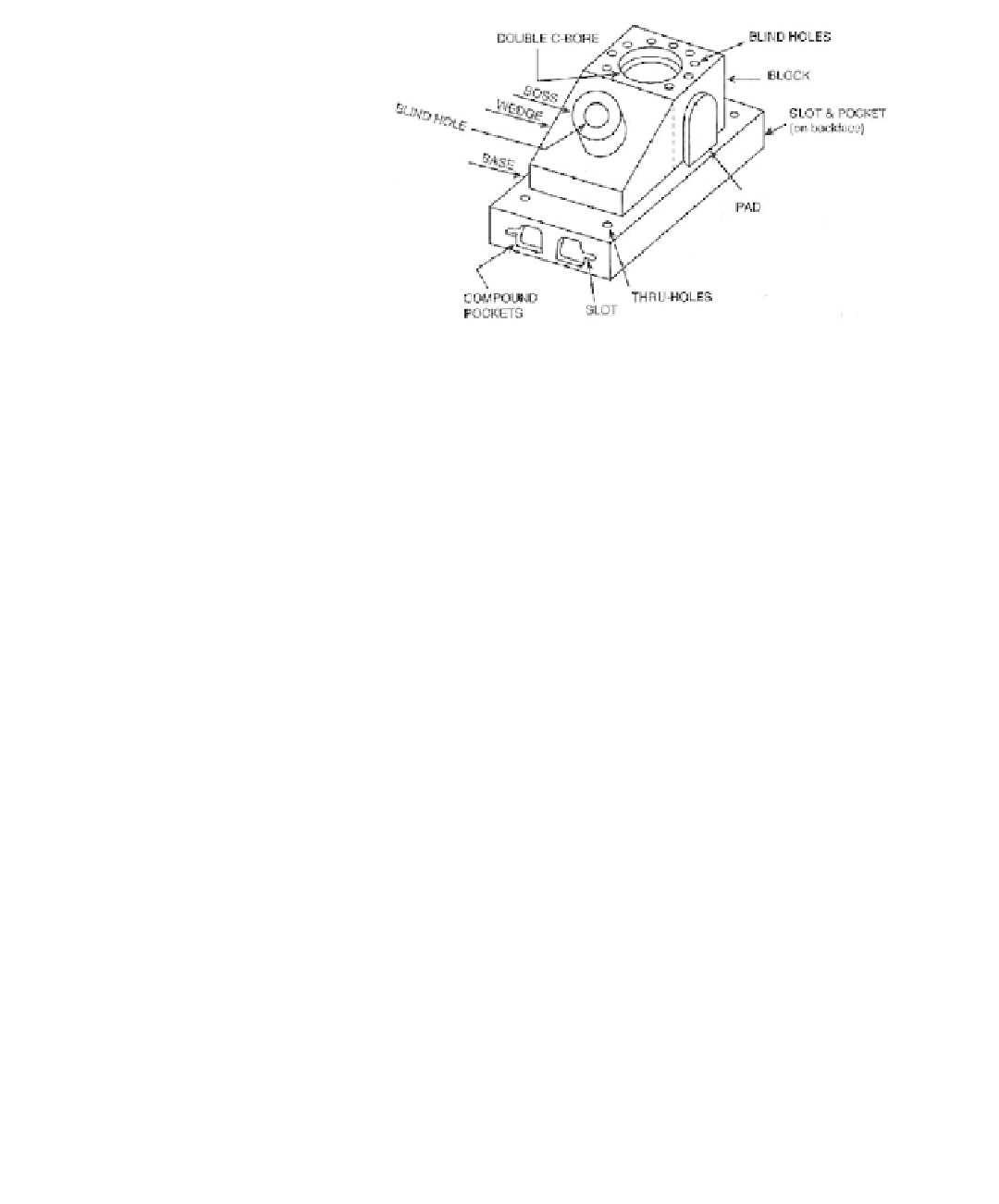Graphics Reference
In-Depth Information
Figure 5.32.
Modified
ANC101 test part (CAM-I and
[ShaM95]). (This material is
used by permission of John
Wiley & Sons, Inc. from Para-
metric and Feature-Based
CAD/CAM, Shah, 1995 John
Wiley & Sons, Inc.)
hole. Tolerance constraints are needed to ensure that parts will work as specified given
the inevitability of inaccuracies in the manufacturing process. The three geometric
features (form, tolerance, and assembly features) are the ones that are mostly
supported by modelers. Support for functional features is currently still very weak
because it assumes a lot more intelligence on the part of modelers than they currently
have. Although there is no limit on the number of features one can define, attempts
have been made to create taxonomies for them. This is important if one is to have
any data exchange standards.
Just as one has to worry about the validity of geometry, one has to also make sure
that features are created, modified, and deleted in a valid way. Unfortunately, this is
not a mathematical process like it was in the case of geometry. [ShaM95] mentions
four general classes of validity checks that are needed:
(1) Attachment validation:
A recess feature cannot be attached to an outside
face of a block.
(2) Dimension limits:
A hole cannot be larger than the block that contains it.
(3) Location limits:
A hole should not get too close to the edge of a block.
(4) Interaction limits:
This is where two or more features change the geom-
etry or semantics of features. The geometry may not
necessarily be invalid. For example, a larger hole
may delete a smaller hole.
As one moves from one stage to another in the manufacturing process, the fea-
tures that are relevant to the persons involved may change. At the design stage, one
may worry about the strength of a particular geometric configuration, whereas at the
manufacturing stage this may no longer be relevant and the only features one may
care about is where certain holes are to be drilled. This calls for mappings from one
feature model to another and is referred to as
feature mapping
.
Modelers are typically not concerned with features as such, at least not explicitly.
One either needs to add to them the ability to deal with features or add features as a
set of primitive data structures. For example, CSG is not detailed enough for many
features and b-rep is too detailed. So how do we add feature capability to modelers?
The three standard approaches are

